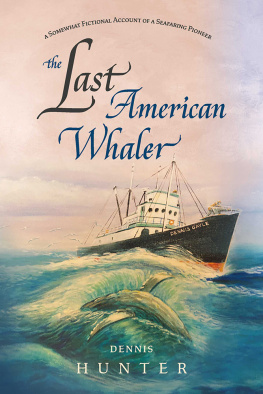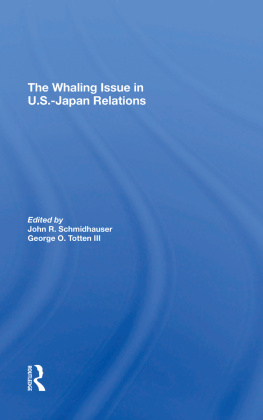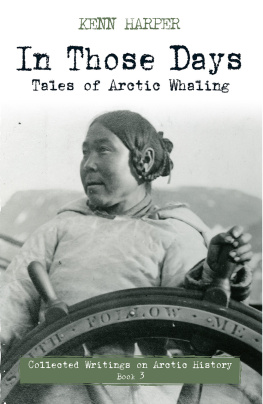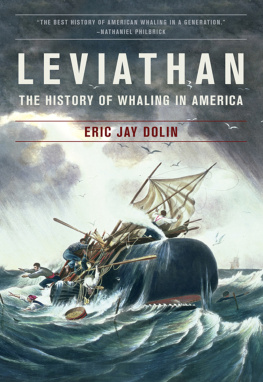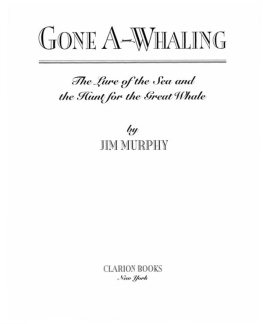Copyright 2011 by Eugene Arima and Alan Hoover.
Digital edition v1.0 prepared 2019.
Published by the Royal BC Museum, 675 Belleville Street, Victoria, British Columbia, V8W 9W2, Canada.
The Royal BC Museum is located on the traditional territories of the Lekwungen (Songhees and Xwsepsum Nations). We extend our appreciation for the opportunity to live and learn on this territory.
All rights reserved. No part of this book may be reproduced or transmitted in any form by any means without permission in writing from the publisher, except by a reviewer, who may quote brief passages in a review.
Edited, produced and typeset by Gerry Truscott (RBCM), with editorial assistance from Mike Chapman and Andrea Scott.
Cover design by Michael Carter and Jenny McCleery, RBCM.
Front-cover image: Tait-tats-toe, a Tseshaht man, about 1864 (Charles Gentile photograph, RBCM PN-4814). Back-cover images: Makah whalers beaching a whale near Neah Bay, about 1910 (Asahel Curtis photograph, Washington State Historical Society 21078); Where the Whales Used to Dig Clams by Tim Paul (see page 10).
Digital imaging by Carlo Mocellin (RBCM) and Reber Creative.
Images from the collections of the Royal BC Museum are credited as RBCM. All other images and text excerpts are reprinted with permission, as credited. Copyright or reproduction rights remain with their creators or sources.
Maps by Leni Hoover and Reber Creative, Royal BC Museum.
Index by Carol Hamill.
ISBN 978-0-7726-7812-6 (PDF)
ISBN 978-0-7726-7813-3(ePub)
ISBN 978-0-7726-7814-0 (Mobipocket)
Library and Archives Canada Cataloguing in Publication
Arima, E. Y. (Eugene Yuji), 1938
The whaling people : of the west coast of Vancouver Island and Cape Flattery / Eugene Arima and Alan Hoover. Rev. and updated ed.
Original ed. published under title: The west coast people.
Includes bibliographical references and index.
ISBN 978-0-7726-6491-4
1. Nootka Indians. 2. Indians of North America British Columbia Vancouver Island. 3. Indians of North America Washington (State) Flattery, Cape. I. Hoover, Alan L. II. Arima, E. Y. (Eugene Yuji), 1938-. The west coast people. III. Title.
E99.N85A74 2011 971.120049795 C2011-906023-X
Preface
Eugene Arima wrote the original edition of this book, entitled The West Coast (Nootka) People, published by the British Columbia Provincial Museum (now Royal BC Museum) in 1983. This new edition has been substantially revised and updated and includes five more narratives. It addresses a misconception about the economic importance of whaling to the Whaling People, noting the relationship between whale hunting and drift whaling. And it includes information on treaty negotiations between the Nuu-chah-nulth and the governments of British Columbia and Canada.
In this edition we use the term Whaling People to include the Nuu-chah-nulth proper, the Ditidaht and Makah. Although the Whaling People of Vancouver Island now refer to themselves as Nuu-chah-nulth or West Coast People, they formerly had no overall name because they comprised about two dozen independent groups named separately in the 19th century. The name for each group was taken from the name of the place where it lived or a descriptive term with the suffix ?ath or ath in Nuu-chah-nulth proper or ?a?tx in the related but different Ditidaht and Makah languages (see for a spelling key). These suffixes can be translated as residing at, belonging to, or people of. Consequently, Gilbert Malcolm Sproat, who settled in Alberni in 1860, called them the Ahts in his book on the Whaling People (1868), mistaking the origin of the suffix to be from the mythic character kwatyat, whose name he wrote Quawteaht. Other early writings about the Whaling People refer to them as Aht, Aht Indians or Ahts.
Nootka and Nootkans are the most common identifying names for the Nuu-chah-nulth, still widely used in ethnology and linguistics (e.g., Suttles 1990), but they arise from Captain James Cook mistakenly thinking that the large inlet he visited in 1778 was called Nootka. Gesturing, he asked some native men what the place was called. The men did not understand him, but guessed that he wanted to know if the inlet continued around the large island (Brabant 1926:160), and with a circling gesture supposedly replied notka, noted as Nookka in Cooks journal (Beaglehole 1967:308). But according to Chief Kwisto x (Charles Jones Sr) of Port Renfrew, the men said, Notkshe! Notkshi?e! Cha?ak?e!, meaning Get round! Get around! The island!, warning Cook about the reefs he was approaching at Yuquot village (Arima et al. 1991:6).
Although the geographical names Nootka Sound and Nootka Island continue, the people of this region never liked being called Nootka or Nootkans. In 1978 the Allied Tribes of the West Coast (established in 1958), changed its name to Nuu-chah-nulth Tribal Council. The term Nuu-chah-nulth was suggested by Mowachaht elder Abel John (Ha-Shilth-Sa 1978:5:5:4): He explained that this word best described the west coast and how all our tribes are tied together through the mountains.
Attempts to make Nuu-chah-nulth the name for all Whaling People ran into a linguistic problem: in the languages of the Ditidaht and Makah peoples, to the south, the term for all along the mountains is docha?d, which sounds quite different. Some political distances also make the name difficult to use for the southern groups. In this light, the common English term West Coast (sometimes Westcoast) was proposed in the first edition of this book as an appropriate term for the people: it alludes to the open-ocean side of Vancouver Island and its extension to the people of Cape Flattery was ethnically appropriate. There is a Nuu-chah-nulth counterpart in Hitistis?ath, meaning West-side People. In this edition of the book we use west coast to refer to the geographical area on the west coast of Vancouver Island that is the traditional territory of the Nuu-chah-nulth, Ditidaht and Pacheedaht peoples.
Captain Cook proposed another name for the people: Wakashian, from the applauding shouts he received when he went ashore. Wakash!, Waykesh! and Kahawakaah!, the people cried, translated as Bravo! Bravo! (Beaglehole 1967:323, Sapir and Swadesh 1939:258). This name survives in linguistics as Wakashan to designate the language family embracing the languages of the Nuu-chah-nulth, Ditidaht and Makah and another related branch, the so-called Kwakiutl (Kwagu) languages of northeast Vancouver Island and neighbouring mainland.
In summary, we use the term Whaling People to include all groups of the Nuu-chah-nulth, Ditidaht, Pacheedaht and Makah. We also maintain the three-part geographic division to distinguish certain words: the northern and central groups, who speak the Nuu-chah-nulth language, though some words differ between the regions, and the southern groups, the Ditidaht, Pacheedaht and Makah, who speak the two closely related languages Ditidaht and Makah. Unless otherwise indicated the terms are in the Nuu-chah-nulth language. When it is necessary to differentiate their sources, the words are identified by N (northern), C (central) or S (southern), or Dit if only Ditidaht.
As the Pacific swells break along the home shores of the Whaling People, there may still be some who count the waves to see which one is the biggest. For centuries people have been counting these waves, sitting before their cedar-plank houses, watching the sea. The ninth wave is the biggest, one might declare. No, its the seventh, another might say. Or the fifth, or the thirteenth. The question has never been settled. There are many other details as yet unsettled about the lives of the Whaling People, but enough is known to sketch in the main forms for a popular description. We will focus attention on the more important matters, but keep in mind that the lives of the Whaling People have been and are filled with thousands of smaller things, like wave counting, that go undescribed.
Next page


